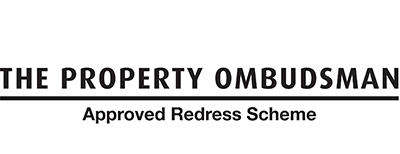



As we recently marked the coronation of King Charles 3rd, we can reflect on how much our area was defined and coloured by the first King Charles and many other royals since. That influence is all over our locality – and all over our local names for streets and districts. The main effect Charles 1st had on us of course was to create Richmond Park. In 1637 he enclosed lands from the manors of Petersham, Sheen and Mortlake to create ‘His Majesty’s New Park’ for the hunting of red and fallow deer. Though he did grant some concessions to the locals including rights of way through the park gates, and for the ‘commons’ to gather fuel. So we still have Ham Gate Avenue up to Ham Gate and when Berkeley Homes developed the old Latchmere House site, they came up with the idea of connecting it to its nearby hunting ground and branded it as ‘Richmond Chase’. I’ve always smiled a bit at the name the developers came up with for the old Hawker/Aerospace factory site when it was transformed into ‘Royal Park Gate’. As one of my sarcastic clients once noted, its not Royal, its not that near the Park and it hasn’t got a Gate, but apart from that it’s very appropriate. (They did at least name the individual roads after aircraft – Camel Grove, Salamander Close, -and airfields – Biggin Hill Close, Northweald Lane etc)
But then what’s in a name ? Well actually quite a lot to builders and developers. When GT Crouch developed his 1930s Tudor estate in the ‘Tudorbethan’ style typical of that era of British housebuilding, it was originally marketed as the ‘Richmond Park Estate’. Its street names hark back earlier to the Henry V111 era. For example Aragon Road (after Katherine – wife No. 1) forks left into Cardinal Avenue and right into Wolsey Drive. Anne Boleyn’s Walk (wife No. 2, beheaded) is a little cul de sac off Tudor Drive. Charles 1st of course also suffered the eventual fate of beheading in 1649.
The manors of Ham and Petersham were bestowed by his predecessor James I on his son, Henry, Prince of Wales and the building of Ham House was completed in 1610 by Thomas Vavasour, Knight Marshal to the king. When Prince Henry died, the lands passed to James’s second son, Charles, some years before his coronation, – as Charles 1,- in 1625. Lots of names passed through Ham House all commemorated locally – such as Murray Road (from William Murray the tenant from 1623, – a childhood friend of Charles 1st and his alleged ‘whipping boy’. (The Kings tutors couldn’t punish Charles for any of his misdemeanours so Murray took the beatings for him). Perhaps in gratitude, Charles upgraded him in 1643 to 1st Earl of Dysart (hence our local Dysart Avenue). Murrays eldest daughter Elizabeth married Lionel Tollemache (there are the Tollemache almshouses in Ham Street) and remained at Ham House through the parliamentary era and after the monarchy was restored when Charles 11 was crowned in 1660. After Tollemache died she married the Duke of Lauderdale, a favourite of the King. He is one of 5 street names commemorating the so-called CABAL of Charles 11 where the leading ministers were Clifford, Arlington, Buckingham, Ashley and Lauderdale. So in a tight area we now have Clifford Road, Arlington Road, Buckingham Road, Ashley Gardens and Lauderdale Drive. Though putting on my surveyors hat, forgive me if I find the nearby names of Sandy Lane and Sandpits Road more interesting as an indicator of underlying ground conditions.
There’s a view across our area from Richmond Hill in a Turner painting of a later royal occasion – the birthday of the Prince Regent (later George 1V). This was Turners largest canvas yet when exhibited in 1819 and a blatant pitch for royal patronage, but surprisingly it never found a buyer and it remained in Turners own collection. Richmond itself of course is awash with royal names as you would expect from the place which was once the site of the main royal palace and main home of Elizabeth 1st. The main shopping street George St (formerly Great Street) was named after George 111 in 1769. With estate agents love of collective nouns for little districts, the cottages between Houblon Rd and Kings Rd have been ‘the Alberts’ to generations of us. The Albert in question is of course Queen Victoria’s husband and all the other streets built there around 1870 are named after other royal family members.
Ham has its own area we refer to euphemistically as Ham Riverside Village. So much more elegant we think than the more perfunctory sounding ‘Wates Estate.’ And I also started to ponder if the proposed development of Ham Close should keep its current name or get a new one more in keeping with its size and setting. We remember that the King visited here of course as Prince Charles in 2014 and declared it ‘a marvellous place’. The intention for some time has been to preserve the green space at the Ham Street end so my own estate agents’ thoughts would be how about relating it to Ham Riverside Village and calling it Ham Green Village? You’ll have your own thoughts, -sorry I can’t help mine – it goes with the territory!